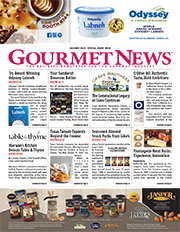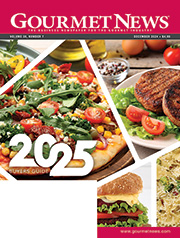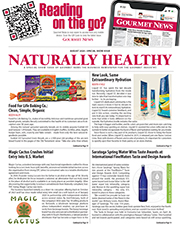
Southern Glazer’s Matches Employee Donations for Ukraine Relief
Southern Glazer’s Wine & Spirits will match 100 percent of all employee donations made to three charitable organizations supporting Ukraine relief during the next 90 days.
Southern Glazer’s has chosen to support World Central Kitchen, United Nations High Commissioner for Refugees and Cooperative for Assistance and Relief Everywhere through its matching campaign for Ukraine relief. Employees are able to contribute through the company’s internal giving platform, VolunCheers Online, in order to be eligible for the donation match.
“Southern Glazer’s stands in support of the Ukrainian people,” said CEO Wayne E. Chaplin. “We are deeply saddened by the crisis and our hearts are with those who have been impacted by this terrible situation. Our family values represent a spirit of inclusiveness and giving back that is part of our cultural DNA, which is why we’ve chosen to support three organizations that have stepped in to provide much-needed aid. Our employees never hesitate to lend a helping hand in times of crisis, and we are happy to amplify their generosity through this campaign.”
To keep up with the specialty food industry, subscribe to Gourmet News.
California Megadrought to Hit Wine Industry Hard
2021 presented an extraordinary level of soil water deficit and irrigation that could sometimes be ineffective due to the severity of the California megadrought, according to a new report on two =counties, Sonoma and Napa, conducted by Agrology.
“2021 data shows that dry farmed and irrigated vineyards managed to narrowly avoid destructive levels of water stress and those levels challenged even hearty dry-farmed vineyards,” said Adam Koeppel, co-F\founder and CEO. “With 2022 predicted to be the driest in 1,200 years, it’s imperative that growers be judicious in their use of irrigation water. Predictive Agriculture technology will help you optimize your water usage down to the drop.”
Agrology reported that up until harvest, soil moisture and water deficit impacts from the drought appeared significant across Napa and Sonoma. Soil Water Potential extremes of nearly -3,000 kPa were recorded at irrigated vineyards, and more than -5,000 kPa at dry farmed vineyards. For reference, the University of California recommends initiating irrigation at midday leaf water potential of 1,000-1,500 kPa, corresponding to pre-dawn soil water potential of 1,800-2,300 ko. This indicates that irrigation could not keep up with the drought. In addition, dry farming was challenged with a lack of micro nutrient delivery, as nutrients delivered via drip irrigation systems did not have enough water to reach deep root zones.
“Unfortunately growers now have to contend with the constant threats of a changing climate,” added Koeppel. “It’s imperative that growers can track and understand all important elements in realtime–from water to soil to smoke. We built Agrology to do just that. One system and one app to give growers a view into what’s happening in that moment and the near future.”
Subscribe now to Gourmet News for specialty food industry updates.
Study: Americans See Food Inflation Rate Higher Than Reality
“Americans’ belief that food prices are rising more than twice as fast as they actually are should concern retailers, manufacturers and the government alike,” said Grant Steadman, president for North America at dunnhumby. “We not only see this mismatch between sentiment and reality in the U.S., but also in every country we surveyed.
“Consumers are now more concerned with their finances and the country’s economy than they were five months ago. We need to revise our thinking about how consumers consider inflation. Likely, we have not yet seen the full extent of how consumers will react to food price increases. This could diverge further, particularly if the security situation in Europe worsens and further impacts energy and commodity prices globally.”
Key findings in the food inflation study include:
- Fifty-one percent of U.S. shoppers surveyed are concerned that their money doesn’t go as far as it used to due to rising prices, marking a 10 point increase since September 2021, and a 12 percent increase since May 2020. Eighty-three percent said food prices have gone up some and half say they have gone up by a lot.
- The majority of U.S. consumers (58 percent) believe the economy is weak, a three point increase from September 2021, and the same percentage from February 2021. And 40 percent of consumers continue to report their own finances are weak, consistent with the prior two waves of the dunnhumby study in 2021.
- Walmart was again cited for providing the best value for the money by 54% of respondents, an increase of 25 points from September 2021. Aldi (18 percent), Kroger (10 percent) and Amazon (10 percent) finished in the top three for best value.
- Americans’ worry about the pandemic is at an all-time low (13 percent) and 20 points below consumers’ worry in Chile, the country with the highest Worry Index. The continued reduction in worry comes at the same time as more Americans than ever now know someone personally who has had COVID, at 44 percent compared to 37 percent in September. The U.S. remains in the lower half of countries that are not very worried about COVID-19, followed closely by Slovakia, Denmark, France, and China all tied at 11 percent. Countries that remain very worried about the pandemic include Chile (33 percent), Japan (31 percent), Brazil (29 percent), Portugal (27 percent), Malaysia (27 percent) and Mexico (25 percent).
- The surge in cases from the Omicron variant slightly reduced the number of trips consumers made to stores in late January through early February and reversed consumers’ belief from September 2021 that things were starting to return to normal. Only 19 percent of consumers reported that things were returning to normal in stores compared to 24 percent in September.
- While online shopping numbers have varied from wave to wave, they are essentially flat from where they were in May 2020. Thirty-three percent of U.S. respondents have ordered more online since Covid-19 began. Fifty-five percent of respondents made at least one online shopping trip during the week they were surveyed, up 17 percent since March 2020. Consumers also reported they make an average of one trip per week using click-and-collect making that channel as popular as delivery.
- Only 39 percent of U.S. consumers surveyed are satisfied with the instore shopping experience, a 3 percent drop since September 2021. Only 36 percent of those surveyed felt stores are doing a good job with COVID. Although consumers’ satisfaction with how stores are addressing the virus is low, it is nearly triple the approval rate U.S. consumers have for how government has dealt with the pandemic (22 percent). In every country surveyed, consumers felt stores are doing a better job than the government.
- Although economic pressures have increased over the last five months, the percentage of respondents using key value-seeking strategies has remained flat (53% of respondents compared to 52 percent in September 2021). Value seekers see inflation rates as even higher (18.4 percent) than those not actively seeking value (16.9 percent).
Subscribe to Gourmet News for updates on the specialty food industry.

















